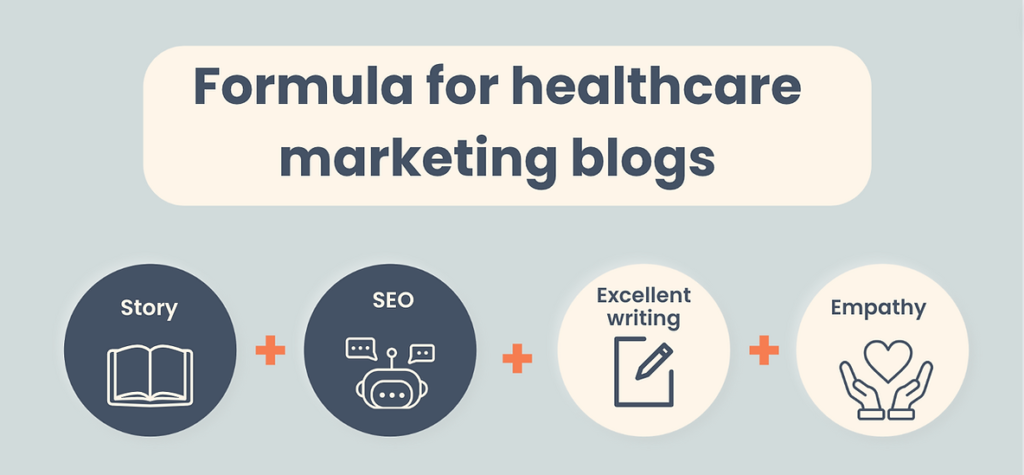How Empathy Can Help Healthcare Organizations Build Trust
This article is part of Focus on Content Marketing: A Spotlight on Content Marketing Trends for Healthcare Marketers, an exclusive member report from eHealthcare Strategy & Trends.
// By Wendy Margolin //
 In a climate of diminishing trust in institutions, healthcare organizations can use empathy in storytelling to attract patients.
In a climate of diminishing trust in institutions, healthcare organizations can use empathy in storytelling to attract patients.
Of all the marketing tips for healthcare, the most important (and simplest) one is this: express empathy.
Empathy draws your reader or viewer in. It makes them imagine themselves in the story, as if it could have been them or might be them in the future. When done well in healthcare marketing, showing empathy engenders trust.
One of my favorite business podcasts, What Works with Tara McMullin, dropped an episode in the fall comparing wellness industry coaches vs. licensed experts. I appreciate Tara’s conversation on why so many people turn to coaches for support: trust.
Who do many people trust to help them improve their lives? The answer, of course, depends on the person and the circumstances. When people choose coaches and other wellness providers, the coach or provider’s anecdotal evidence of having experienced a similar challenge and then overcoming it can matter more than even licensed credentials.
Consider the situation of an alcoholic in AA. Both the physician and the AA mentor play critical — albeit very different — roles in the treatment and recovery process.
Empathy in Healthcare Writing and Videos Builds Trust
Our need to feel seen, heard, understood, and supported at a time when we are vulnerable is universal and essential. This is what makes sharing stories that express empathy such a crucial part of healthcare marketing content.
Read on for examples of content that shows empathy and a formula that can improve your healthcare content.
For clinicians, expressing empathy — which is typically recognized as good bedside manner — isn’t easy in the limited time slots with each patient. But as patients, we know right away when we don’t feel supported. A TV spot from Tia does a great job of showing what many women experience at some point in their health journey.
This near-universal feeling of not feeling listened to makes sharing stories that show empathy critical to every healthcare organization’s marketing.
Stories that express empathy show your audience:
- That they’re not alone
- That the healthcare organization empathizes with their problems
- That others like them have sought and found treatment and support.
Formula for Successful Storytelling to Show Empathy in Healthcare Copywriting
One key to powerful storytelling in healthcare content is using the story to highlight your organization’s services. It’s also crucial to balance the story with subject matter expertise and supporting data.
Every healthcare blog, white paper, or feature article needs these elements:
- Story: A compelling story tends to be the most memorable part of any content you write.
- Empathy: Tie the story to one person’s experience. This can be your physicians or subject matter experts sharing how they contributed to the positive outcome. Or telling how they themselves have experienced something similar to what your audience struggles with. Or it can be a story of how you supported a patient or family in their health journey.
- Data: Support your story with data that shows the big picture. A good statistic can normalize what your audience experiences or showcase your success rates in treating a particular condition. For example, in a blog about chronic urinary tract infections, you could share that 50 percent of women experience a UTI in their lifetime. This stat normalizes a potentially embarrassing and frustrating problem.
- Services: Your goal in telling stories is to always use them to highlight how your services are different so that you can help more people.
Stories That Showcase Empathy Are Easy to Find in Healthcare
Most clinicians have a personal story that propelled them into a lifetime of serving others. Someone they loved, or they themselves, once had a life-altering medical experience. The clinician was inspired to enter healthcare either to do similar work to help others or to do better work to improve the outcome for others.
Children’s Hospital of Los Angeles does this remarkably well in a blog about a cardiac nurse who now works in the same hospital as her cardiac surgeon. The post says, “She saw how nurses could change how families feel, lifting the energy in a hospital room even on stressful days. I wanted to affect a patient’s mood like that to make a patient feel safe.”
Sharing stories is powerful for any healthcare organization, even in B2B companies. Getinge highlights groundbreaking ventilator technology in this video.
Patients and families who benefit from a healthcare organization’s exceptional support are often willing to share their own stories.
Blogs from Stanford Medicine Children’s Health do this well. Try reading the story of Amanda, a mother who delivered her daughter Angelina prematurely so that she could have immediate emergency open heart surgery, without holding your breath. The article describes the difficult choices the medical team had to weigh to give the baby her best fighting chance and then brings the reader into the operating room:
“I was still opened up on the table when I was told that they got the whole tumor out from the root. I started crying with relief,” Amanda says. “I couldn’t believe how fast it all happened.”
In no time at all, Angelina’s blood pressure improved, and her body turned pink. The multispecialty team’s intensive planning, expertise, and sound forethought made for a calm, methodical, and successful outcome for both Amanda and Angelina, despite how sick baby Angelina was.
“It was heroic. This is an example of our highest level of advanced care we offer, and it’s something we are skilled at doing here at Lucile Packard Children’s Hospital Stanford,” says Sonia Bonifacio, MD, neonatologist.
Powerful stories occur every day in healthcare. Telling them helps patients and prospective patients stay informed and access the right care for them.
This article is part of Focus on Content Marketing: A Spotlight on Content Marketing Trends for Healthcare Marketers, an exclusive member report from eHealthcare Strategy & Trends.
As owner of Sparkr Marketing, Wendy Margolin helps busy healthcare marketing communications teams create more content so that they can stand out in a crowded online space. She’s on a mission to build a better medical web, one article at a time. Her favorite form of content is hospital brand journalism, which ties together her 20-year career in journalism, marketing, and healthcare.

